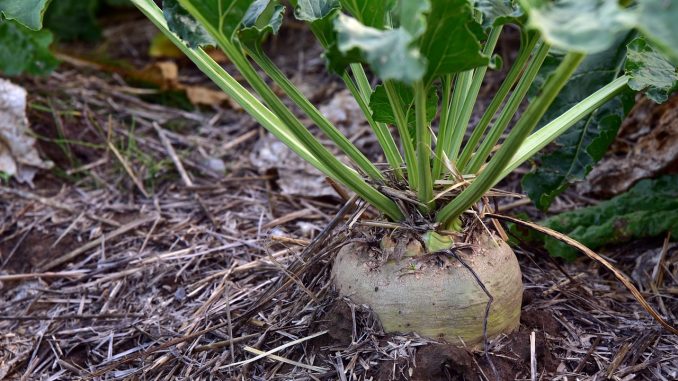
Transgenic plants are created through a complex process that involves the introduction of foreign genes into a plant’s genome. This genetic modification allows the plant to exhibit specific desirable traits, such as resistance to pests or improved nutritional content. The creation of transgenic plants is a multidisciplinary endeavor that combines biology, genetics, and biotechnology. The process typically involves several key steps, including the identification of target genes, the insertion of these genes into the plant, and the subsequent cultivation and selection of transgenic plants.
The first step in generating transgenic plants is to identify the target genes that will confer the desired traits. This step often involves extensive research to identify genes responsible for specific characteristics, such as drought tolerance or resistance to herbivores. Once these genes are identified, they can be cloned and prepared for insertion into the plant’s genome.
The next critical step in generating transgenic plants is the introduction of the foreign genes into the plant. This is typically accomplished through one of several techniques, including agrobacterium-mediated transformation or biolistic particle bombardment. Agrobacterium-mediated transformation involves using a bacterium called Agrobacterium tumefaciens, which naturally transfers genes into plants. Researchers can manipulate Agrobacterium to carry the desired genes and then infect the plant with it. Biolistic particle bombardment, on the other hand, involves shooting tiny gold or tungsten particles coated with the target genes into plant cells using a gene gun. Once the foreign genes are successfully inserted into the plant’s genome, the plant is considered transgenic.
After the foreign genes are incorporated, the transgenic plants need to be regenerated from the transformed cells. This is done through tissue culture, a process in which plant cells are grown in a nutrient-rich medium to develop into mature plants. The transformed cells are carefully selected and cultivated under controlled conditions to ensure their successful growth into whole plants.
Transgenic plants can be subjected to various selection methods to identify those with the desired traits. This may involve exposing the plants to the specific conditions or challenges they were engineered to overcome, such as drought, pests, or herbicides. Alternatively, researchers may use molecular markers to identify plants that have successfully incorporated the foreign genes. Molecular markers are DNA sequences that are linked to the target genes and can be used to track their presence in the plant’s genome.
Once transgenic plants with the desired traits have been identified and confirmed, they can be propagated through conventional breeding techniques. This involves crossing the transgenic plant with non-transgenic plants of the same species to produce offspring with the desired traits. Over several generations of breeding, a stable population of transgenic plants can be established.
The generation of transgenic plants also involves rigorous safety and regulatory considerations. Many countries have established regulations and guidelines for the development and release of transgenic plants to ensure their safety for the environment and human consumption. Extensive testing is typically conducted to assess the potential environmental impact and the safety of consuming transgenic crops.
One of the primary concerns is gene flow, which refers to the movement of genes from transgenic plants to wild or non-transgenic relatives. This can have unintended ecological consequences, such as the spread of herbicide resistance to wild plants. To mitigate this risk, isolation distances and other containment measures may be employed to prevent cross-breeding between transgenic and non-transgenic plants.
Furthermore, potential allergenicity and toxicity of newly introduced proteins in transgenic plants are evaluated through comprehensive testing. These assessments help ensure that the consumption of transgenic crops does not pose health risks to humans or livestock.
In addition to safety assessments, transgenic plant development is subject to intellectual property regulations. Researchers and companies that develop transgenic crops may seek patent protection for their inventions, which can lead to complex legal and ethical considerations related to ownership and access to genetic resources.
The development of transgenic plants has led to significant advancements in agriculture and has the potential to address critical global challenges, such as food security, environmental sustainability, and the reduction of chemical pesticide usage. Transgenic crops have been engineered to resist pests and diseases, tolerate adverse environmental conditions, and improve nutritional content. These modifications have the potential to increase crop yields, reduce the need for chemical inputs, and enhance the nutritional value of staple foods.
Despite the benefits, the use of transgenic plants is not without controversy. Concerns about the environmental impact, potential health risks, and ethical issues surrounding genetic modification have fueled debates about the safety and desirability of transgenic crops. Advocates argue that they offer an effective means of addressing food security and reducing the ecological footprint of agriculture. Critics raise concerns about long-term ecological consequences, corporate control over seeds, and the potential for unintended health effects.
The generation of transgenic plants is a multi-faceted process that combines genetics, biotechnology, and rigorous safety assessments. It involves the identification of target genes, the introduction of these genes into the plant’s genome, tissue culture for plant regeneration, selection of transgenic plants with desired traits, and extensive safety testing. Transgenic plants have the potential to address critical global challenges in agriculture and food production, but their development and use are subject to scientific, regulatory, and ethical scrutiny. The ongoing debate about the benefits and risks of transgenic plants underscores the importance of responsible research, transparent regulation, and informed public discourse on this powerful biotechnological tool.
Case Study: The Creation of Transgenic Sugar Beet
[This part of the article is an abridged version of a literature review conducted by FoodWrite for a sugar producer]
The creation of transgenic sugar beet involves a complex process that combines genetics, biotechnology, and rigorous testing to introduce desirable traits into sugar beet plants. This genetic modification aims to enhance the crop’s resistance to pests, tolerance to herbicides, or other beneficial characteristics. Sugar beet is a valuable crop used for sugar production and is grown in many regions around the world. The development of transgenic sugar beet is a multidisciplinary effort that requires several key steps, including target gene identification, gene insertion, regeneration of transgenic plants, and thorough safety and regulatory evaluations.
The initial step in creating transgenic sugar beet is to identify the target genes that will confer the desired traits. This crucial phase often involves extensive research to pinpoint genes responsible for specific traits such as resistance to pests, improved sugar content, or tolerance to herbicides. Scientists may also look for genes from other plant species or organisms that can provide the necessary characteristics. The selection of these genes is a fundamental aspect of the transgenic plant development process, as it forms the basis for the genetic modification.
Once the target genes are identified, the next stage is to introduce these genes into the sugar beet’s genome. This is typically achieved using sophisticated genetic engineering techniques, with two primary methods being agrobacterium-mediated transformation and biolistic particle bombardment.
Agrobacterium-mediated transformation involves a natural process in which a bacterium called Agrobacterium tumefaciens is used to transfer genes into plants usually via the Ti plasmid. Researchers can modify the Agrobacterium to carry the desired genes and then introduce it into sugar beet plants. The bacterium infects the plant cells and transfers the foreign genes into the plant’s genome. This method has been widely used in transgenic plant development due to its efficiency and reliability.
Another technique for gene insertion is biolistic particle bombardment. In this method, tiny gold or tungsten particles are coated with the target genes and then shot into plant cells using a device known as a gene gun. The high-velocity particles penetrate the plant cells and deliver the foreign genes into the nucleus, where they can be integrated into the plant’s DNA. Biolistic transformation is particularly useful for plant species that are challenging to modify with Agrobacterium.
Once the foreign genes are successfully incorporated into the sugar beet’s genome, the transformed cells need to be regenerated into mature, whole plants. This step is accomplished through tissue culture, a controlled environment where plant cells are grown in a nutrient-rich medium to develop into complete plants. During this process, the transformed cells are carefully selected and cultivated to ensure their successful growth into mature sugar beet plants.
The subsequent step involves identifying and selecting transgenic sugar beet plants that carry the desired traits. This can be achieved through various methods, such as exposing the plants to specific conditions or challenges they were engineered to overcome. For instance, if the target gene provides resistance to a particular pest, the transgenic sugar beet plants can be exposed to that pest to confirm their resistance. Alternatively, researchers may use molecular markers to identify the presence of the foreign genes in the plant’s genome. Molecular markers are specific DNA sequences linked to the target genes and can be used to track their integration and expression in the plant.
It’s important to emphasize that creating transgenic sugar beet plants is not a one-time effort but rather a continuous process. Researchers may need to perform multiple rounds of transformation and selection to generate plants that exhibit the desired traits consistently. This requires patience and meticulous attention to detail in the laboratory and greenhouse.
In addition to the technical aspects of transgenic sugar beet development, it is crucial to address the regulatory and safety considerations associated with genetically modified organisms (GMOs). Many countries have established regulatory frameworks to govern the development, testing, and commercialization of transgenic crops, including sugar beet. These regulations are in place to ensure the safety of the environment and human health.
One primary concern is gene flow, which refers to the movement of transgenic genes from sugar beet to wild or non-transgenic relatives. This can have unintended ecological consequences, such as the spread of herbicide resistance to wild plants. To mitigate this risk, isolation distances and other containment measures may be employed to prevent cross-breeding between transgenic and non-transgenic sugar beet or related species.
Furthermore, rigorous assessments are conducted to evaluate the potential allergenicity and toxicity of newly introduced proteins in transgenic sugar beet. These assessments are essential to ensure that the consumption of transgenic crops does not pose health risks to humans or livestock.
The development of transgenic sugar beet is also subject to intellectual property regulations. Researchers and companies that create transgenic crops may seek patent protection for their innovations. This can lead to complex legal and ethical considerations related to ownership and access to genetic resources, as well as issues of affordability and accessibility for farmers in different regions.
Transgenic sugar beet has the potential to offer numerous benefits, including increased resistance to pests, improved tolerance to herbicides, and enhanced sugar content. These modifications can lead to higher crop yields, reduced pesticide usage, and increased profitability for sugar beet growers. Additionally, transgenic sugar beet may contribute to more sustainable agriculture practices by reducing the environmental impact of conventional farming.
Despite the potential advantages, the use of transgenic sugar beet is not without controversy. Concerns about environmental impact, gene flow, and unintended consequences of genetic modification have sparked debates about the safety and desirability of transgenic crops. Advocates argue that they offer a valuable tool for addressing agricultural challenges and increasing food production, while critics raise concerns about long-term ecological effects, corporate control over seeds, and the potential for unknown health risks.
The creation of transgenic sugar beet involves a complex process that combines genetics, biotechnology, and comprehensive safety and regulatory evaluations. It includes the identification of target genes, the introduction of these genes into the sugar beet’s genome, tissue culture for plant regeneration, selection of transgenic plants with desired traits, and thorough safety testing. Transgenic sugar beet has the potential to address important agricultural and economic challenges, but its development and use are subject to scientific, regulatory, and ethical scrutiny. The ongoing debate about the benefits and risks of transgenic sugar beet highlights the need for responsible research, transparent regulation, and informed public discourse on the use of genetically modified crops in agriculture.


Leave a Reply